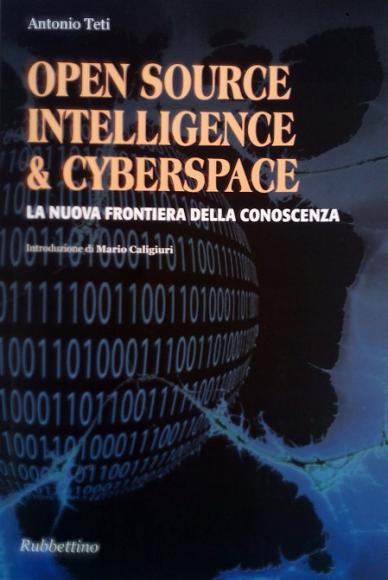Antonio Teti
Publisher rubbettino
pp. 268
"The new frontier of knowledge", this is the subtitle of the book by Antonio Teti, professor of Technology of persuasion in the Cyberspace in the master's degree course in Clinical and Health Psychology at the “G. D'Annunzio ”of Chieti- Pescara.
The book is divided into four chapters that deal with the subject in an organic and clear way, certainly the result of the author's many years of experience in the field of teaching, Open Source Intelligence and cyberspace.
It starts with "The concept of Open Source Intelligence (OSINT): history, concepts, methodologies", in this first chapter in fact Teti tries to explain in the simplest and most intuitive way possible, as far as matter allows, what OSINT is .
OSINT means the product of publicly available information that is collected, exploited and disseminated in a timely manner to an appropriate audience in order to meet a specific intelligence requirement.
In the first chapter the author deals with the history of OSINT, starting from the efforts made by the British government in the 1939 which, in collaboration with the BBC, established the news monitoring service provided by the press, radio TV and other open sources. In the 1941 the United States constitutes the Foreign Broadcast Monitoring Service (FBMS) with the purpose of monitoring, analyzing, translating and archiving news and information from foreign media. Other supra-state organizations (global and regional) have also dealt with OSINT, among them NATO has published several guidance documents in the sector.
The author does not miss the importance of the relatively new area of the 2.0 web. The transformation induced by the introduction of this new technology (especially with regard to i social networks) has in fact transformed what has always been the public from user to producer of data and information.
The author then deals with the sources, the benefits of OSINT for governments and private individuals, and then moves on to OSINT in Cyberspace.
In the second chapter it deals with the process of searching for information and explores some aspects related to the peculiarities of the work of intelligence analysts, trying to highlight the relational aspect between the analyst and the user of the intelligence. Addressing research and analysis methodologies. In the third chapter the author presents in an exhaustive way the research and analysis on the Internet, also presenting different tools for processing information, techniques and methods of investigation on the net. Finally, in the fourth chapter, he presents some aspects of the network that are not very well known to those who are not professionals, the so-called "dark side of the network".
Ultimately the book is well structured and, thanks also to Antonio Teti's many years of teaching experience, it is an excellent study aid for those approaching the world of OSINT, also providing excellent food for thought for those who have used its use. done a job.
Alessandro Rugolo












